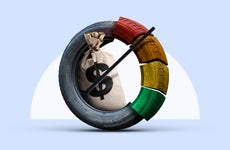Auto Loans
Before getting behind the wheel of your new vehicle, compare auto loans, estimate payments and find a financing option that’s right for you. Let Bankrate steer you through the process.
Editor's picks
What's new
-

Get an oil analysis before buying a used car
Don’t just look at a used car’s polish and history. Get an oil analysis to learn about the health of the engine.
3 min read Apr 19, 2024 -

Carputty vs. Autopay: Which offers better auto loans?
Carputty offers a Flexline for auto loans, but Autopay loans are more accessible.
2 min read Apr 19, 2024 -

Should I buy a new or used car? Here’s how to decide
There are pros and cons of getting the latest model.
4 min read Apr 19, 2024 -

Carputty vs. PenFed: Which offers better auto loans?
Who’s the better auto loan lender — Carputty or PenFed Credit Union?
2 min read Apr 19, 2024 -

Credit Direct vs. LightStream: Which offers better auto loans?
Credit Direct and LightStream car loans are made for nontraditional car purchases.
2 min read Apr 18, 2024 -

6 Reasons why you should get your car loan at a credit union
Learn why these nonprofit institutions are a smart choice for auto buyers.
5 min read Apr 18, 2024 -

You can refinance a car loan with bad credit — but should you?
Whether you can refinance your car loan with poor credit and save depends on several factors, including your current loan.
5 min read Apr 16, 2024 -

What to do if you can’t make your last car loan payment
Missing a car payment has the same result on the first installment as the last.
3 min read Apr 16, 2024 -

Mistakes to avoid when leasing a car
Car leasing can make financial sense, but not if you overlook these details.
8 min read Apr 12, 2024 -

5 tips for buying a new car & common mistakes to avoid
Here’s how to buy a new car and get a great deal in the process.
6 min read Apr 08, 2024




